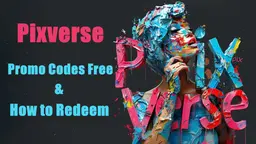Cosa è Recall?
Recall è una piattaforma avanzata basata s'intelligenza artificiale che aiuta gli utenti a riassumere e gestire il contenuto online in modo efficiente. Utilizzando l'intelligenza artificiale di ultima generazione, Recall estrae automaticamente i punti chiave da vari formati, inclusi podcast, video di YouTube, articoli di notizie e PDF, salvandoli in una base di conoscenze personale. Questa base di conoscenze non è solo una raccolta di riassunti; è una rete interconnessa in cui il contenuto viene categorizzato e collegato automaticamente, facilitando la riscoperta e la comprensione di argomenti complessi.
Una delle caratteristiche distintive di Recall è l'integrazione di tecniche di ripetizione spaziale e richiamo attivo, che migliorano l'apprendimento e la memorizzazione. Gli utenti possono rivedere il contenuto salvato attraverso flashcards e esercizi di richiamo attivo, garantendo che le informazioni siano memorizzate a lungo termine. Inoltre, Recall enfatizza la proprietà e la sicurezza dei dati dell'utente, memorizzando i dati localmente sul dispositivo dell'utente e fornendo opzioni per l'esportazione dei dati in formato Markdown. Con il suo set di funzionalità robuste e il focus sulla comodità dell'utente, Recall è uno strumento potente per professionisti e appassionati dell'apprendimento che cercano di gestire e trattenere le informazioni efficacemente.

Casi d'Uso di Recall
1. Sviluppo Professionale e Apprendimento:
Recall è uno strumento inestimabile per professionisti e studenti che desiderano rimanere aggiornati con le ultime tendenze e conoscenze del settore. Riassumendo articoli, video e PDF lunghi, Recall consente agli utenti di afferrare rapidamente i punti chiave e trattenere le informazioni in modo più efficace. Per esempio, uno sviluppatore software può utilizzare Recall per riassumere e categorizzare articoli sulle ultime lingue di programmazione o framework, garantendo di rimanere in vantaggio nel proprio campo. L'integrazione delle tecniche di Richiamo Attivo e Ripetizione Spaziale migliora ulteriormente l'apprendimento e la memorizzazione, rendendo più facile richiamare dettagli importanti quando necessario.
2. Ricerca e Gestione della Conoscenza:
I ricercatori e gli accademici possono trarre grande beneficio dalla capacità di Recall di organizzare e interconnettere le informazioni. Creando un grafo della conoscenza, Recall aiuta gli utenti a scoprire connessioni tra diversi contenuti, il che può essere particolarmente utile durante le rassegne della letteratura o la sintesi dei risultati della ricerca. Per esempio, un ricercatore che lavora sul cambiamento climatico può utilizzare Recall per riassumere e categorizzare varie studi, articoli e report, rendendo più facile identificare tendenze e lacune nella ricerca.
3. Creazione e Cura del Contenuto:
I creatori di contenuti, come blogger, scrittori e marketer, possono utilizzare Recall per semplificare il processo di creazione del contenuto. Riassumendo e organizzando il contenuto da diverse fonti, Recall aiuta gli utenti a trovare rapidamente informazioni e idee rilevanti. Per esempio, un blogger può utilizzare Recall per riassumere e categorizzare articoli e video su un argomento specifico, come l'etica dell'IA, per creare post di blog ben informati e completi. La capacità dello strumento di esportare note in formato Markdown facilita anche l'integrazione con altri strumenti di creazione di contenuti.
4. Base di Conoscenze Personale:
Recall può servire come base di conoscenze personale, aiutando gli individui a gestire e accedere a un vasto range di informazioni in modo efficiente. Categorizzando e collegando automaticamente il contenuto, Recall rende facile trovare e ricordare le informazioni quando necessario. Per esempio, un appassionato può utilizzare Recall per riassumere e organizzare articoli, video e tutorial su un hobby, come la fotografia o la cucina, garantendo di avere una raccolta di conoscenze ben organizzata e facilmente accessibile.
5. Collaborazione di Team:
Le squadre che lavorano su progetti possono utilizzare Recall per centralizzare e condividere le informazioni. Creando una base di conoscenze condivisa, i membri del team possono collaborare più efficacemente, garantendo che tutti abbiano accesso alle stesse informazioni. Per esempio, un responsabile di progetto può utilizzare Recall per riassumere e categorizzare appunti di riunioni, aggiornamenti di progetto e articoli rilevanti, rendendo più facile per il team rimanere informato e allineato.
6. Sviluppo Personale e Apprendimento Continuo:
Gli individui impegnati nell'apprendimento continuo possono utilizzare Recall per gestire e trattenere informazioni da diverse fonti. Riassumendo e categorizzando il contenuto da libri, podcast e corsi online, Recall aiuta gli utenti a costruire una base di conoscenze completa e interconnessa. Per esempio, una persona interessata alla finanza personale può utilizzare Recall per riassumere e organizzare articoli, video e podcast sulla pianificazione finanziaria, garantendo di avere una risorsa robusta e facilmente accessibile per prendere decisioni informate.
Come Accedere a Recall: Guida Passo Passo
Recall è uno strumento potente progettato per aiutarti a riassumere e gestire il contenuto online in modo efficiente. Ecco come accedere e iniziare a utilizzare Recall:
Passo 1: Installa l'Estensione del Browser
- Scegli il Tuo Browser
- Visita il Negozio di Estensioni
- Cerca Recall
- Installa l'Estensione
- Aggiungi l'Estensione alla Barra degli Strumenti
Passo 2: Crea un Account
- Apri l'Estensione Recall
- Iscriviti
- Accedi
Passo 3: Inizia a Riassumere il Contenuto
- Naviga verso il Contenuto
- Clicca sull'Icona di Recall
- Genera un Riassunto
Seguendo questi passaggi, puoi iniziare a utilizzare Recall per gestire e riassumere il tuo contenuto online in modo efficiente, risparmiando tempo e migliorando la tua memorizzazione delle informazioni.
Come Utilizzare Recall: Guida Passo Passo
Passo 1: Installa l'Estensione del Browser di Recall
- L'estensione del browser di Recall è il modo più semplice per aggiungere contenuto alla tua base di conoscenze. Installa l'estensione dal negozio di Chrome o Firefox. Una volta installata, un'icona di Recall apparirà nella barra degli strumenti del browser.
Passo 2: Aggiungi Contenuto Utilizzando l'Estensione del Browser
- Naviga verso la pagina web che desideri riassumere. Clicca sull'icona di Recall nella barra degli strumenti del browser. L'estensione genererà automaticamente un riassunto della pagina. Esamina il riassunto, fai eventuali modifiche e clicca "Salva" per aggiungerlo alla tua base di conoscenze di Recall.
Passo 3: Usa la Ricerca In-App per Aggiungere Contenuto
- Apri l'app di Recall e clicca il pulsante più nell'angolo in basso a destra o usa la scorciatoia da tastiera (⌘ + k su macOS, Ctrl + k su Windows). Puoi incollare un URL o digitare una query di ricerca. Recall recupererà e riassumerà il contenuto. Seleziona un risultato di ricerca per generare una scheda di conoscenza.
Passo 4: Organizza il Contenuto con i Tag
- Ogni scheda di conoscenza può essere etichettata per facilitare l'organizzazione. Clicca sulla sezione "Tag" di una scheda e aggiungi tag rilevanti. I tag possono essere gerarchici, permettendo una categorizzazione specifica. Per esempio, puoi etichettare una scheda come "Articolo di Notizie" e "The New York Times."
Passo 5: Esplora e Collega le Schede di Conoscenza
- Utilizza la "Vista Grafo" per visualizzare le connessioni tra le tue schede di conoscenza. Clicca su una scheda per vedere i suoi backlink, che sono schede che menzionano la scheda corrente. Puoi anche espandere le schede collegate per vedere più dettagli e creare nuove connessioni.
Passo 6: Utilizza la Ripetizione Spaziale per Migliorare la Memoria
- Abilita la funzione di Ripetizione Spaziale per rivedere il contenuto salvato a intervalli ottimali. Questo aiuta a rafforzare la tua memoria e migliorare la memorizzazione. Puoi impostare riassunti settimanali via email o sessioni di revisione in-app.
Passo 7: Esporta i Tuoi Dati
- Se hai bisogno di esportare le tue note, vai alle impostazioni e seleziona "Esporta Dati." Le tue note saranno salvate in formato Markdown, rendendo facile l'uso con altri strumenti.
Seguendo questi passaggi, puoi utilizzare efficacemente Recall per gestire e trattenere informazioni da diverse fonti online.
Come Creare un Account su Recall
Recall è uno strumento potente progettato per aiutarti a riassumere e organizzare il contenuto online in modo efficiente. La creazione di un account è un processo semplice. Segui queste istruzioni passo passo per iniziare:
- Visita la Pagina di Iscrizione di Recall: Apri il tuo browser web e vai alla pagina di iscrizione di Recall visitando https://app.getrecall.ai/signup. Questa pagina è dove inserirai i tuoi dettagli per creare un nuovo account.
- Inserisci il Tuo Indirizzo Email: Nel campo "Indirizzo Email," inserisci l'indirizzo email che desideri utilizzare per il tuo account Recall. Assicurati di utilizzare un indirizzo email valido, poiché verrà utilizzato per la verifica dell'account e il reset della password.
- Crea una Password: Nel campo "Password," crea una password forte e sicura. La password dovrebbe essere lunga almeno 8 caratteri e includere una combinazione di lettere, numeri e simboli per migliorare la sicurezza.
- Conferma la Password: Nel campo "Conferma Password," reinserisci la password che hai creato nel passo precedente. Questo passaggio garantisce che tu abbia inserito correttamente la password e aiuta a prevenire errori di battitura.
- Esamina la Politica sulla Privacy: Sotto il modulo, vedrai un link alla Politica sulla Privacy. È una buona idea leggere questa politica per comprendere come i tuoi dati verranno gestiti. Clicca sul link per aprire la Politica sulla Privacy in una nuova scheda se hai bisogno di maggiori informazioni.
- Iscriviti: Una volta che hai compilato tutti i campi obbligatori e esaminato la Politica sulla Privacy, clicca il pulsante "Iscriviti" per creare il tuo account. Sarai reindirizzato a una pagina di conferma o alla dashboard principale, a seconda della configurazione del sito.
- Verifica l'Indirizzo Email (se richiesto): Dopo l'iscrizione, potresti ricevere un'email da Recall chiedendoti di verificare il tuo indirizzo email. Apri l'email e clicca sul link di verifica per completare la configurazione dell'account.
Seguendo questi passaggi, avrai creato con successo un account su Recall e potrai iniziare a utilizzare le sue funzionalità potenti per gestire e organizzare il tuo contenuto online.
Suggerimenti per Utilizzare Efficientemente Recall AI
1. Sfrutta la Categorizzazione Automatica:
La funzione di categorizzazione intelligente di Recall AI può aiutarti a organizzare il contenuto con minimo sforzo. Quando salvi nuovo contenuto, lascia che l'IA si occupi della categorizzazione e poi esamina e aggiusta i tag secondo necessità. Questo garantisce una organizzazione coerente e intuitiva della tua base di conoscenze.
2. Utilizza la Vista Grafo:
La vista grafo è uno strumento potente per visualizzare le connessioni tra diversi contenuti. Esplora regolarmente questa funzione per scoprire nuove relazioni e intuizioni. Può aiutarti a comprendere argomenti complessi e generare nuove idee.
3. Personalizza le Tue Schede di Conoscenza:
Sebbene Recall AI fornisca riassunti automatizzati, non esitare ad aggiungere le tue note e annotazioni. Personalizzare le tue schede di conoscenza con intuizioni personali e contesto aggiuntivo può migliorare la tua comprensione e memorizzazione del materiale.
4. Implementa il Richiamo Attivo:
Utilizza la funzione di Richiamo Attivo per testare la tua conoscenza senza risorse esterne. Questa tecnica è altamente efficace per rafforzare l'apprendimento e assicurarti di comprendere veramente il contenuto.
5. Pianifica le Revisioni con la Ripetizione Spaziale:
Approfitta della funzione di Ripetizione Spaziale di Recall AI per pianificare sessioni di revisione a intervalli ottimali. Questo metodo aiuta a consolidare la tua conoscenza nel tempo, garantendo la memorizzazione a lungo termine.
6. Esporta Regolarmente i Tuoi Dati:
Per garantire di avere un backup e di poter trasferire facilmente la tua base di conoscenze a strumenti diversi, esporta regolarmente i tuoi dati in formato Markdown. Ciò ti permette anche di mantenere il controllo sulle tue informazioni.
Seguendo questi suggerimenti, puoi massimizzare i benefici di Recall AI e gestire efficacemente e trattenere la vasta quantità di informazioni che consumi quotidianamente.




